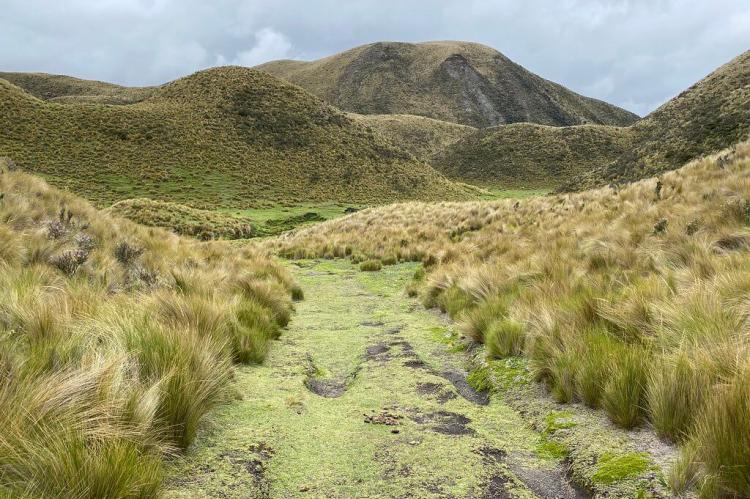The Northern Andean Páramo: A High-Altitude Sanctuary of Biodiversity
High above Colombia and Ecuador's cloud forests and montane landscapes, the Northern Andean páramo is a remarkable and unique ecoregion. This vast expanse of high-altitude grasslands, wetlands, and shrublands is vital to the Andes ecosystem and a global biodiversity hotspot.
The Northern Andean Páramo: A High-Altitude Sanctuary of Biodiversity
Soaring high above Colombia and Ecuador's cloud forests and montane landscapes, the Northern Andean páramo is a truly remarkable and unique ecoregion. This vast expanse of high-altitude grasslands, wetlands, and shrublands is a vital component of the Andes ecosystem and a global biodiversity hotspot teeming with an array of specialized plant and animal life found nowhere else on Earth.
Geographical Scope and Elevational Gradients
The Northern Andean páramo stretches across the Andes mountain range, spanning the northern regions of Colombia and Ecuador. This ecoregion is defined by its high-altitude setting, with elevations ranging from approximately 3,000 meters (9,800 feet) to over 5,000 meters (16,400 feet) above sea level. The dramatic elevational gradients and associated climatic changes create a diverse mosaic of ecosystems, from the lush, moisture-laden páramo grasslands to the stark, wind-swept alpine environments.
Global Biodiversity Hotspot
The Northern Andean páramo is a unique ecoregion within the broader Páramo, or Andean Moorland, a biome stretching along South America's northern Andes. While sharing the high-altitude grasslands, shrublands, and wetlands characteristic of the Páramo ecosystem, the Northern Andean páramo is distinguished by its distinct flora and fauna, adapted to the northern Andean region's specific climatic and environmental conditions of this northern Andean region. As a critical component of the larger Páramo biome, the Northern Andean páramo ecoregion is recognized as a global biodiversity hotspot, prioritizing its conservation.
Climatic Conditions and Hydrology
The Northern Andean páramo experiences a distinctive high-mountain climate characterized by low temperatures, frequent precipitation, and intense solar radiation. This combination of environmental factors has shaped the unique adaptations of the páramo's flora and fauna. The region's intricate network of wetlands, streams, and glacial lakes plays a vital role in regulating the water resources that sustain the Andes' diverse ecosystems and the communities that depend on them.
Vegetation and Ecosystem Dynamics
The páramo is dominated by a diverse array of adapted plant life, including tussock grasses, distinctive frailejón plants (Espeletia spp.), various shrubs, cushion plants, and rosette-forming species. These specialized communities have evolved to thrive in the páramo's harsh, high-altitude conditions, contributing to the ecoregion's exceptional levels of endemism.
Faunal Diversity and Endemism
The Northern Andean páramo is home to a remarkable diversity of animal life, including some endemic and threatened species. Iconic mammals like the Andean bear (Tremarctos ornatus), the endemic mountain tapir (Tapirus pinchaque), and the charismatic spectacled bear (Tremarctos ornatus) inhabit these high-altitude ecosystems. The region also supports many endemic birds, amphibians, and invertebrates, many of which are adapted to the páramo's unique environmental conditions.
Ecosystem Services and Importance
Beyond its exceptional biodiversity, the Northern Andean páramo is vital in regulating the Andes' water resources, serving as a crucial "water tower" for the surrounding regions. The páramo's complex network of wetlands, bogs, and glaciers helps store and slowly release water, supporting the livelihoods of millions of people downstream.
Threats and Conservation Challenges
Despite its ecological significance, the Northern Andean páramo faces a range of threats, including habitat loss and degradation due to agricultural expansion, grazing, mining, and the impacts of climate change. As global temperatures rise and precipitation patterns shift, the páramo's delicate ecosystems become increasingly vulnerable, underscoring the urgent need for comprehensive conservation efforts.
Conservation Initiatives and Collaborative Efforts
In recognition of the páramo's global importance, Colombia and Ecuador have implemented various conservation initiatives to protect this unique ecoregion. Transboundary collaboration, establishing protected areas, and promoting sustainable land use practices are all vital components of the ongoing effort to safeguard the Northern Andean páramo for current and future generations.
Ecotourism and Environmental Education
The Northern Andean páramo offers tremendous potential for ecotourism and environmental education, allowing visitors to immerse themselves in one of the world's most unique and threatened high-altitude ecosystems. From guided hikes and wildlife-watching expeditions to educational programs that highlight the páramo's cultural and ecological significance, these initiatives can play a crucial role in fostering greater appreciation and support for the conservation of this remarkable natural treasure.
Conclusion
The Northern Andean páramo is a true natural wonder, a high-altitude sanctuary that harbors an exceptional diversity of life and is a vital resource for the communities that call the Andes home. As we work to protect this remarkable ecoregion, we must recognize its global significance and commit to the collaborative efforts that will ensure its long-term preservation for the benefit of all those inspired by the grandeur of the Andes.
